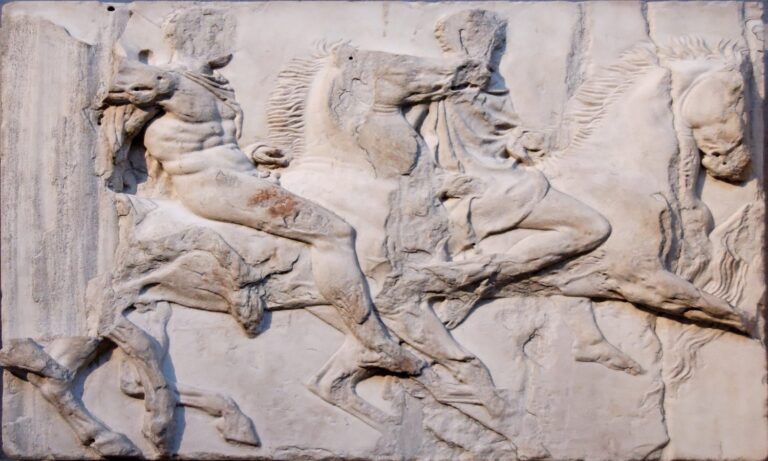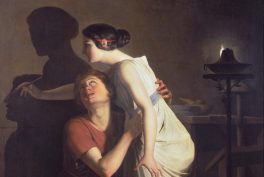There are four general Ancient Greek stylistic periods. Different, note-worthy styles, influences from invading cultures and their lasting effects on the art of Ancient Greece characterize each period.
*Below is a generalization of the major Ancient Greek stylistic periods.*
Geometric
The Geometric period of Ancient Greece began in the early 10th century BC through to the late 8th century BC. It is characterized by geometric patterns, such as the fret or key as seen below on this krater. The Ancient Greeks wanted to focus on their epic historical past and included imagery from poems, such as the Illiad and the Odyssey. This particular piece was used as a grave marker; the soldiers and chariots on the piece may indicate a connection the deceased had to the military or, likewise, to the deceased’s family heritage. Monumental grave markers such as this one were first introduced in the Geometirc period.
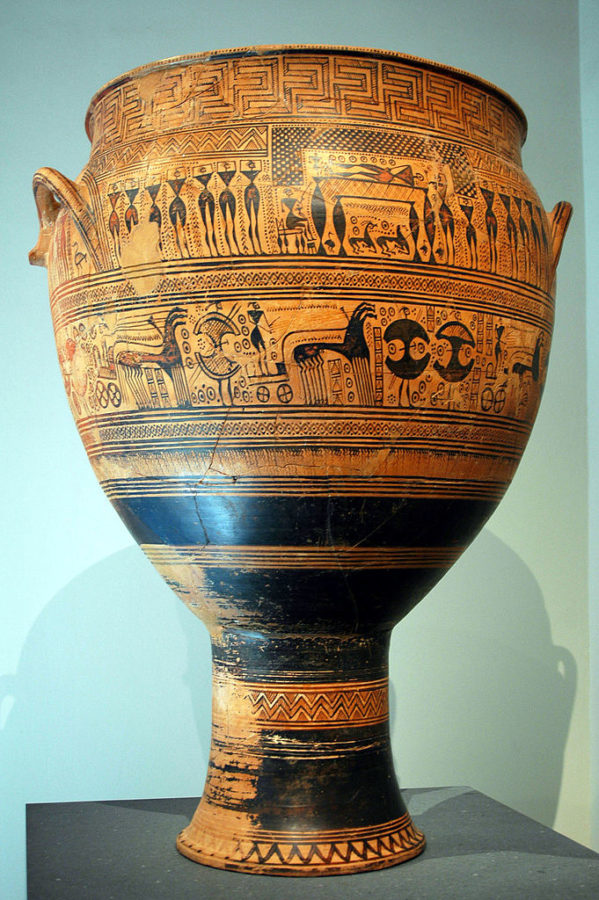
Archaic
The Archaic period of Ancient Greece ranges from the late 8th century BC to the early 5th century. In the Archaic period, the geometric patterns of the preceding years were replaced with a more naturalistic and representational approach influenced by Egypt and the Near East. Both Red-figure and Black-figure styles appeared and flourished in the Archaic period. Much of the pottery available today came from the Archaic Period, including the imagery of Ancient Greek life and culture.
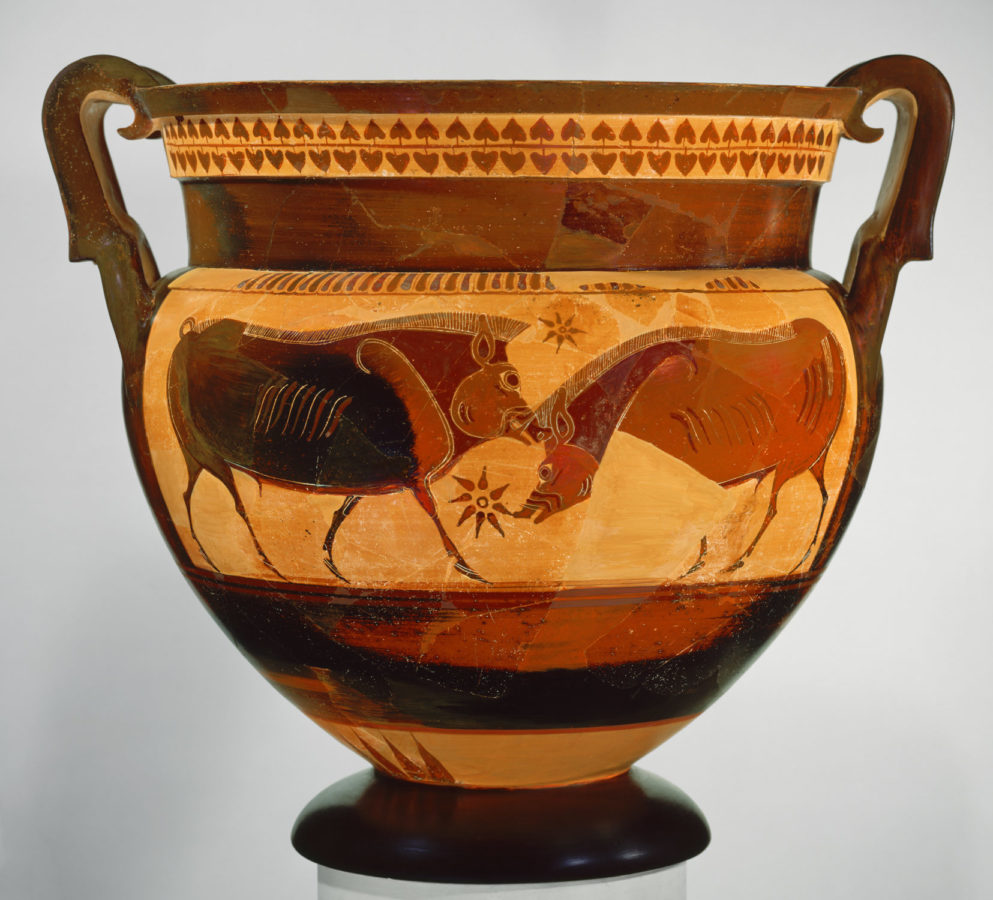
Classical
The Classical period began in roughly the mid-6th century BC and lasted till the late 4th century BC. A national rejuvenation after the Persian Wars characterizes the art of the Classical period. Many of the finest examples of Classical period art and sculptures come from the Parthenon, built during this period. The art of the Classical period portrays a sense of life and harmony. Red-figure superseded Black-figure during this time, as well. Among all the changes, a sense of grandeur and beauty took charge, carrying the harmonious depictions of the human body even further.
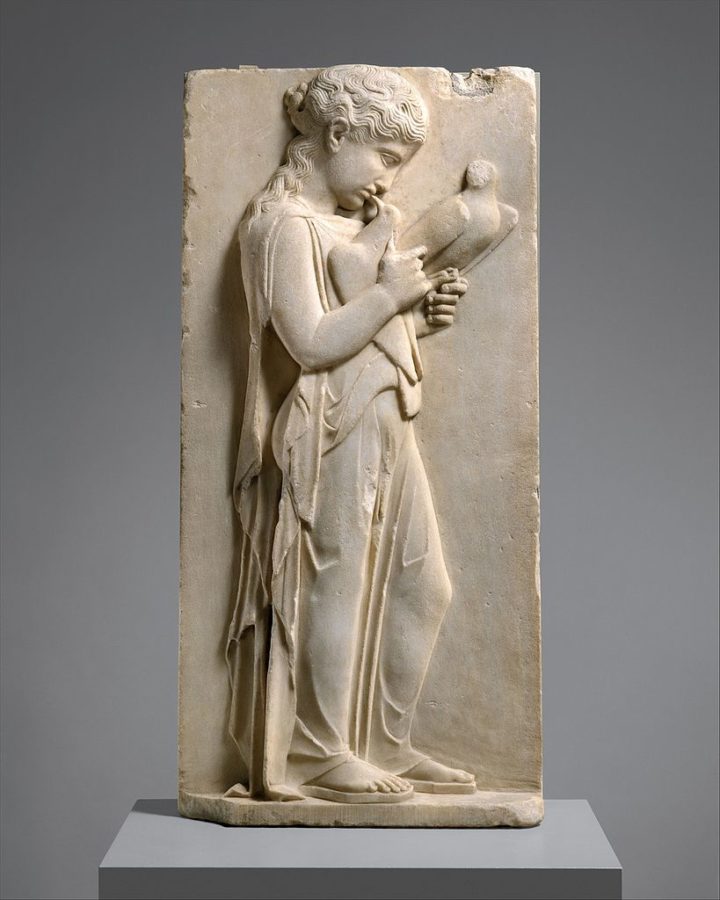
Hellenistic
The Hellenistic period ranges from the late 4th century BCE to the mid 1st century, with the death of Alexander the Great in 323 BC generally marking the beginning. Diversity in the array of and subject matter of art characterized this period. While the Hellenistic artists took from the centuries before them, they also made great strides of their own.
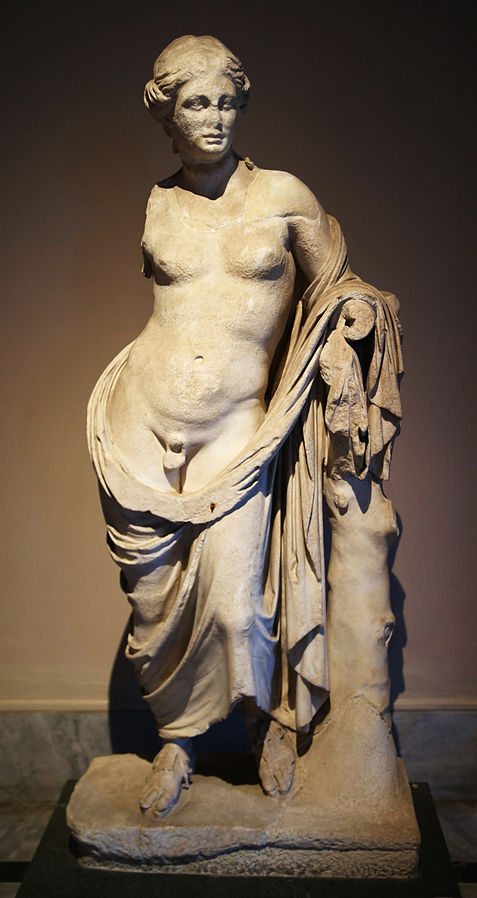
[easyazon_image align=”none” height=”160″ identifier=”0300160054″ locale=”US” src=”https://www.dailyartmagazine.com/wp-content/uploads/2018/10/51D4QjOsZkL.SL160.jpg” tag=”dailyartdaily-20″ width=”105″] [easyazon_image align=”none” height=”160″ identifier=”B00SWZKQ2M” locale=”US” src=”https://www.dailyartmagazine.com/wp-content/uploads/2018/10/51soa42BNJL.SL160.jpg” tag=”dailyartdaily-20″ width=”123″] [easyazon_image align=”none” height=”160″ identifier=”0892366958″ locale=”US” src=”https://www.dailyartmagazine.com/wp-content/uploads/2018/10/41YPJP9D5SL.SL160.jpg” tag=”dailyartdaily-20″ width=”104″]
